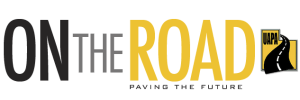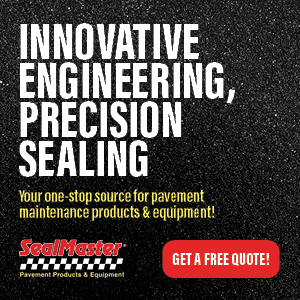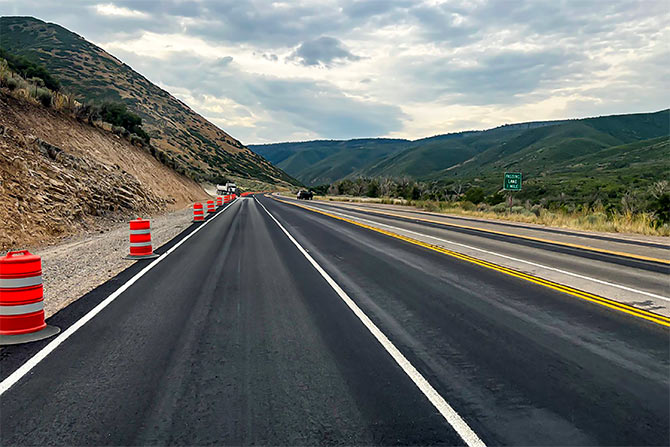Congratulations to our Annual Workplace Safety Award Recipients!
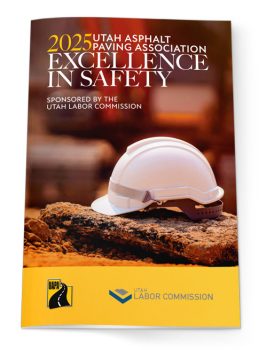

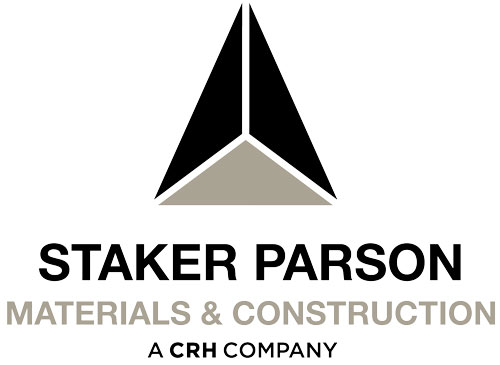
Carlos Edmunds
Safety Specialist
Staker Parson Materials & Construction
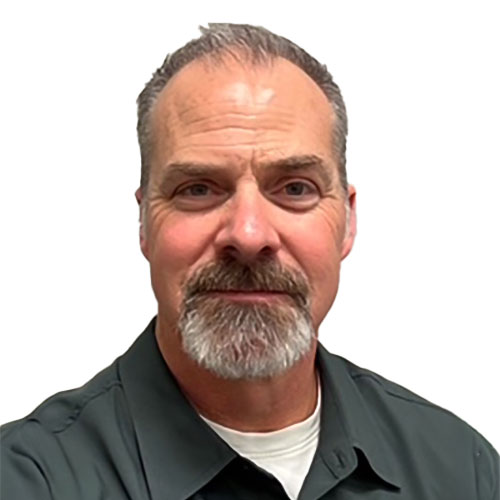
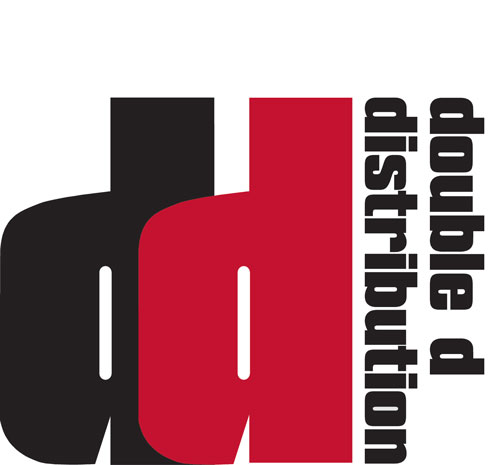
Bryon Gravley
Trucking Operations and Safety Manager Double D Distribution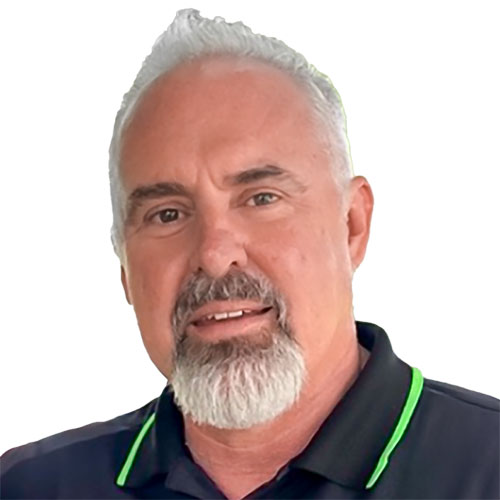

Troy Worthen
Safety Manager Wheeler Machinery Co.
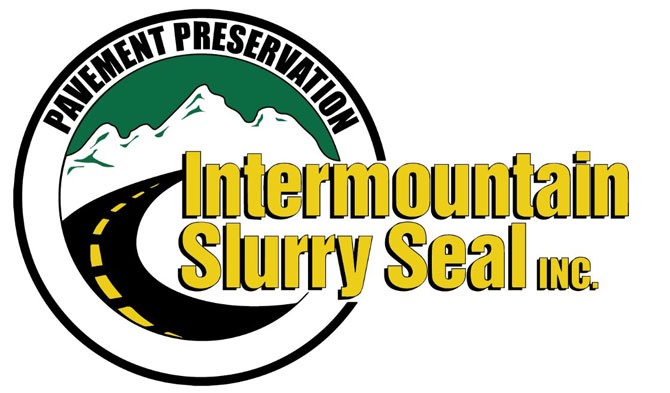
Travis Johnson
Reginal Safety Manager
Intermountain Slurry Seal
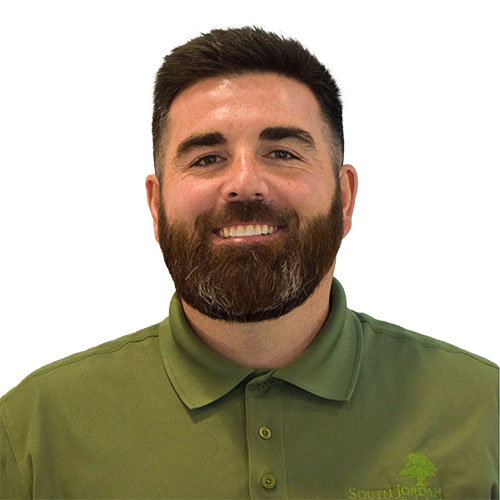
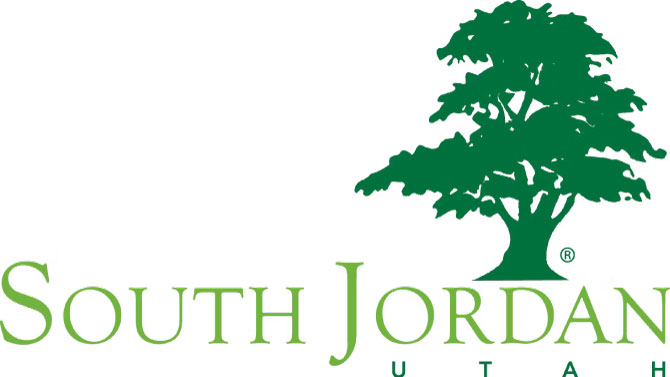
Logan Nickle
Streets and Stormwater Manager South Jordan City
Why is a safety culture important to your company? What motivates your safety leadership team?
Carlos: Staker Parson Companies values providing a safe, healthy and clean work environment for employees and business partners. The company is committed to ensuring that everyone returns home safely each day. The safety leadership team focuses on human performance principles and becoming a learning organization through event learning teams and safety cultural surveys, allowing the company to learn from those closest to the risks.
Bryon: Our number one goal is to help protect the lives and well-being of our professional drivers and the public. We are continually striving to build confidence with our drivers and with our customers. We feel that prioritizing safety with all parties builds confidence and reflects reliability and professionalism with those we do business with.
Troy: Every organization has a culture; some just support safety more than others. Culture is the foundation that will interweave safety into not just what we do but who we are. Our team’s motivation comes from the belief that the company and every associate have a moral obligation to do everything possible to ensure each person returns home safely every day.
Travis: A strong safety culture is the heart of our organization. When it’s robust and everyone is engaged and committed, success follows. Safety culture isn’t limited to one person or department; it’s a collective attitude and commitment to everyone we work with. It’s crucial because it impacts our people, their families and their lifestyles.
Our safety leadership team is motivated by the knowledge that they work for a company that genuinely cares about them as individuals and employees. We prioritize their well-being and ensure every voice is heard and respected. Safety is one of our five core values, and our leadership understands that our employees are our greatest asset.
Logan: Safety culture is a very important part of South Jordan City. Our employees are paramount and a huge part of what makes this city so great. Ensuring everyone can be safe in their day-to-day tasks helps them know they are valued. Motivation for our leadership teams comes from engagement on all levels and knowing it’s a program for everyone, not just leadership.
How does senior management demonstrate their commitment to safety and employees?
Carlos: Our leaders have outlined three core safety principles for achieving world‑class safety performance to be included in every AMAT company safety program:
- Eliminate Serious Harm: Focus on safety-critical tasks and create environments with built-in defenses to ensure safe operations.
- Become a Learning Organization: Build trust, fairness and employee engagement to develop systems that tolerate errors and allow safe failure.
- Cultivate an Employee-Driven Safety Culture: Encourage employees to participate actively and take ownership of the safety program.
Bryon: Every management member has been out in the field or on location loading or unloading. They have done the work that our drivers are expected to do. In addition, we are subject to strict safety regulations, and a good safety culture helps ensure compliance, reducing the risk of injuries, fines, shutdowns or lawsuits. We make sure that our guys have the tools they need to safely do the job and go home to their families.
Troy: The safety of Wheeler Associates, customers and business partners is always the first consideration in all aspects of our business. In addition, providing the necessary resources that enable that to happen.
Travis: Senior management shows their commitment to safety and our employees through several key actions:
- Providing Necessary Tools and Resources: They ensure that all employees have the right tools, equipment and time needed to safely and successfully complete their tasks.
- Leading by Example: Management leads with a positive attitude and demonstrates safe practices in their daily activities. This includes spending adequate time in the field with the crews.
- Proper Planning and Communication: They prioritize proper planning and clear communication to prevent accidents and ensure everyone is on the same page.
- Ongoing Training: Regular training sessions are conducted to keep everyone updated on the latest safety protocols and procedures.
- Listening and Respecting Opinions: Management actively listens to employees’ opinions and respects their input, fostering a culture of mutual respect and continuous improvement.
Logan: Senior management demonstrates their commitment by continually participating in our safety culture and improving anywhere necessary. We provide the proper tools and training to be able to stay safe while providing a quality product for our residents. Here at South Jordan, employees can seek out training and are able to attend any training or conference that would pertain to their job and be a benefit and learning opportunity.
How does your safety program/culture empower your employees?
Carlos: All of our employees are empowered with the authority to STOP work if they feel it is unsafe or whenever they are unsure of procedures or their ability to perform the task safely. One of our core values at Staker Parson is “See, Stop, Do: When I SEE something, I will STOP and DO something.”
Bryon: Our mission statement is located on our lobby wall and in each of our offices. It says, “We believe truckers are American heroes. We empower our people to provide exceptional service for our customers’ challenging and ever-changing needs.” We also stay up to date with today’s technology. Testing and trying the things that will work best in our industry, keeping our drivers, our customers, the public and our company safe.
Troy: All employees have the right and obligation to stop work if something is not safe. Employees along with their supervisors conduct weekly safety walks and catch people doing the right things. Weekly, employees gather around a continuous improvement board and address safety and other process improvement ideas.
Travis: Our safety culture empowers employees in several key ways:
- Encouraging Open Communication: Employees are encouraged to speak up and stop work if they are unsure about a task or if something seems wrong. They can communicate issues positively without fear of repercussions.
- Recognition Programs: We reinforce this empowerment through recognition programs and expressions of gratitude, acknowledging employees who prioritize safety.
- Job Hazard Analysis (JHA): We use JHA to evaluate and implement controls, including elimination, substitution, administrative and engineering solutions, as well as personal protective equipment.
- STCKY Prevention Model: Introduced in late 2020, our STCKY (Stuff That Can Kill You) model targets eight high-energy hazard categories: falls, pinches and crushes, picks and lifts, moves, work environment, stressed and tensioned, shocks and electrical, and toxic and flammable hazards. This model prioritizes the prevention of life-altering injuries and fatalities through rigorous planning, daily “Take 5” meetings and detailed job site inspections. The introduction of the STCKY model has significantly reduced our OSHA Recordable Incident Rate, demonstrating the effectiveness of our safety initiatives.
Logan: Our safety culture here at South Jordan empowers employees by giving them the proper training needed to be successful in their jobs. Employees are empowered to help shape and continue the success of the safety program, no matter their position. We have weekly safety meetings to discuss near misses and past incidents to create awareness about different hazards that are in the field. They will cover certain policies as a reminder. By being open and sharing knowledge it can help avoid the same mistakes repeating themselves.
What is the best avenue for other subcontractors to start building a safety culture?
Carlos: Using resources from associations like UAPA and your insurer’s risk control team is key to building a strong safety program. Supporting and empowering employees will enhance your safety culture.
Bryon: I believe the best way to start building a safety culture is to get out of the office, work side-by-side with your employees and begin building a relationship of trust.
Troy: Begin with senior/executive level leadership, you need their buy-in. There are four main reasons to care about safety:
- It’s morally and ethically the right thing to do.
- Legal reasons.
- Financial reasons.
- Career advancement, leaders and employees who are not safe will not advance or stay in leadership.
Travis:
- Assess Your Current Situation: Begin by objectively evaluating your current safety practices and culture. Identify areas for improvement and set clear goals for where you want to be.
- Commitment and Attitude: Foster a positive attitude and a strong commitment to your employees’ safety. This mindset should be reflected in all your actions and decisions.
- Lead by Example: Leadership at all levels must be fully invested in the safety culture. Demonstrate safe practices and behaviors consistently.
- Continuous Communication: Maintain open and continuous communication about safety. Encourage employees to share their concerns and suggestions.
- Recognition Programs: Implement positive recognition programs to show employees that their safety efforts are valued and respected. This can help shift the culture towards a more safety-conscious mindset.
- Adaptability and Resilience: Be prepared for challenges and obstacles. Stay adaptable and committed to overcoming these hurdles without losing sight of your safety goals.
Logan: Subcontractors can start building this safety culture by truly caring about the well-being of their employees. Helping employees have the proper PPE and proper training to be able to perform their jobs safely and effectively is a great start. Caring enough about the employee to ensure they are able to return home at the end of the day and do so in full health should be the reason.
What overall statement would you like the UAPA community to know about your company’s safety? Especially the Utah subcontractor community?
Carlos: Safety leadership starts from the top with our president’s commitment to prioritizing safety. This culture fosters a work environment where people come first, and safety is the top priority.
Bryon: Being safe is essential because it protects lives, prevents injuries and reduces risks to yourself and others. Safety ensures a secure environment whether at work, on the road, or in daily life, and allows tasks to be completed without unnecessary harm or setbacks. Making safety a priority not only builds trust and reliability but also minimizes costs, legal issues and disruptions. It creates a foundation for a long‑term, wellbeing and successful company culture.
Troy: Wheeler Machinery Company holds safety not as a priority because priorities can change, but as an unshakable value. Culture is what will allow safety to either flourish or flounder. For an organization’s safety culture to evolve, leaders must change their company norms by setting clear expectations around activities that individuals have control over. You must manage the presence of safety and not the absence of injuries.
Travis: A strong safety culture is crucial for creating a work environment where employees feel empowered to prioritize their well-being and that of others. Here are key aspects of our safety culture:
- Empowerment: We empower our employees to prioritize safety, ensuring they feel confident to speak up and take action when necessary.
- Open Communication: Our culture fosters open communication, allowing for the free exchange of safety concerns and ideas.
- Leading by Example: Management leads with a positive attitude and demonstrates safe practices in their daily activities. This includes spending adequate time in the field with the crews.
- Accountability and Proactive Risk Management: We emphasize accountability and proactive risk management to reduce accidents and promote long-term health and productivity.
- Embedded Safety Practices: By embedding safety into every aspect of our operations, we not only comply with regulations but also demonstrate a genuine commitment to our workforce’s welfare.
Logan: Safety is our top value and priority. We care about our employees, and we want to see them succeed in their careers as well as in life. Safety is a mindset, and if all employees are able to help shape the safety program, you will have more engagement. Protecting people shouldn’t be taken lightly but made a responsibility that we all take part in. We spend so much time with the people we work with, we turn into a family. We care about the people we work with and want them to have a great work environment.
